How this crafty woman transformed vintage wool blankets into a full-time hustle
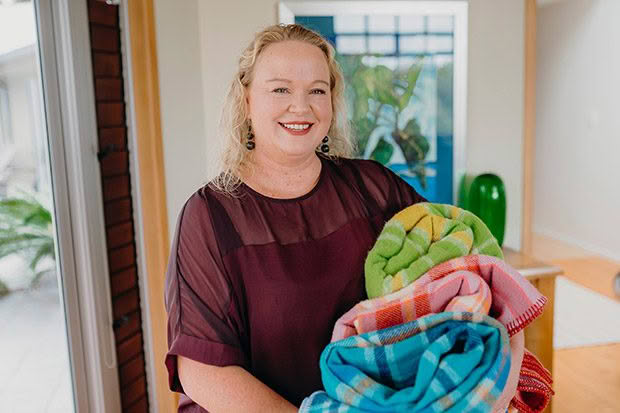
Finding herself unemployed in the middle of a recession, Kathleen Green began restoring vintage wool blankets to their former glory. The nostalgic homeware, she says, appeals to Kiwis far and wide.
Words: Nicole Barratt
Tucked up in bed with a marmalade-orange woollen blanket at her chin, a young Kathleen Green’s future passion quite literally lay before her. She just didn’t know it at the time. What she did know was that nothing compared to the feeling of wool.
“Though I’ve always had that memory, never would I have imagined finding myself as a crazy blanket lady, which is my official title,” says Kathleen.
The classic New Zealand wool blanket, often featuring tartan prints and 1970s colour combinations, has long been a staple in households across Aotearoa. This North Shore-based collector, owner of wool-blanket company Fresh Retro Love, is on a mission to restore beloved blankets to their former glory.
“I’d always had an interest in wool blankets — I had a bit of a collection going myself. I was doing markets at the time so I bought some to sell. I didn’t realise how much people would connect with them,” she says.
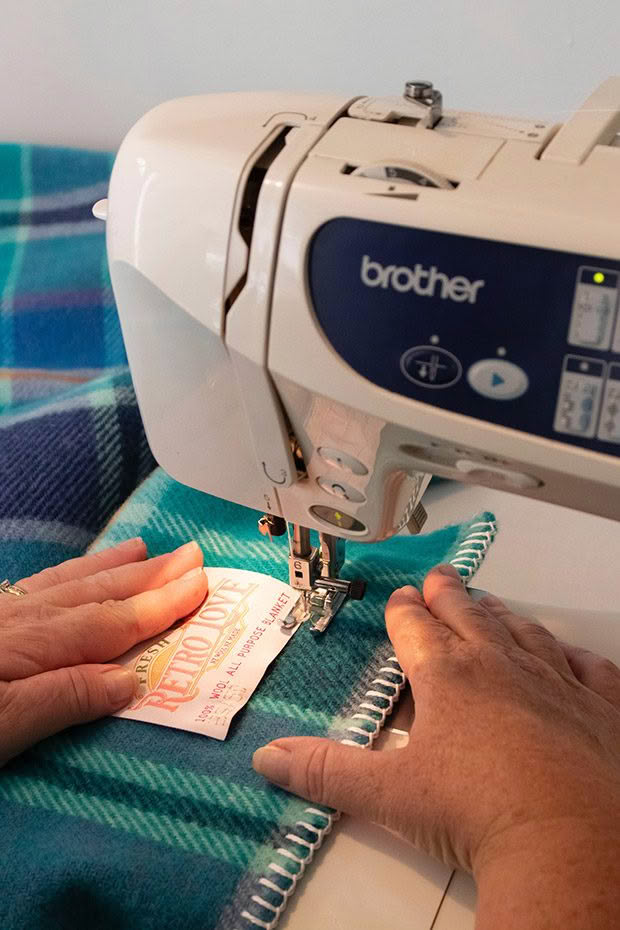
The cheery blankets drew multiple market-goers to her stall and always resulted in conversations around childhood memories connected to the blankets, similar to Kathleen’s. “They’re so recognisable, everyone has cuddled up to one at some point. They’re really a glimpse back in time to New Zealand’s history, and our personal histories too.”
Kathleen has always had a knack for crafts. Before Fresh Retro Love she ran a floristry business, then a scrapbooking shop (co-owned with her mum) on the North Shore of Auckland. Together they taught scrapbooking classes up to six times a week.
“Similar to the blankets, it all relates to memory. With scrapbooking it’s about holding onto memories and how important stories are to identity. Wool blankets are similar in a way, because they’re lifetime things people take and pass on to their own children,” she says.

After running the scrapbooking shop for 12 years, a recession forced Kathleen to close the shop. She’s always been a keen retro collector (stacks of records and an army of babushka dolls line her shelves at home) so naturally setting up a stall at various markets selling vintage finds was her next move.
“I started to put more energy into selling the blankets, because I realised I could improve them. I started repairing and restoring them, and soon that was the bulk of my stall,” she says.
When the nation was in level-four lockdown in 2020, demand for her revived woollen blankets skyrocketed. Taking her business online with markets’ closures, a simple Facebook post on New Zealand-made products page ‘Chooice’ earned her blankets celebrity status. Photos of her woolly restored goodies resonated with the public and raked in almost 10,000 likes.
“I thought if I got 500 likes I’d be pretty happy. I woke with a start one night and checked the time on my phone. It was like the post had exploded — there were notifications coming from everywhere.”

People “got it”, Kathleen says, and everything changed. A new website was built, and orders eventually tamed and under control. Suddenly, there was enough business for Kathleen to have a full-time gig.
“I live in a blanket house now, my head is full of wool fluff,” she says.
Below Kathleen’s office with her sewing machine is ‘the blanket cave’, a little storeroom packed to the roof with blankets waiting patiently for restoration. Reviving the blankets involves multiple processes. They go through a series of washing, stain removal and repair processes, depending on what’s needed. It might be invisible mending, darning, or feature patching.
“You don’t necessarily want to hide holes because they can be part of the story of the blanket,” says Kathleen.
Recently she’s been embroidering holes with autumn leaves. Blankets are brushed carefully to bring out their softness and colour. The hands-on, individual nature of restoration is her biggest challenge as a business owner. It’s a slow process and she could easily spend a whole day working on one blanket.
“I want to do every blanket justice. Some are 40 years old, and once I’ve done a bit of magic on them, they should easily do another 40 years,” she says.
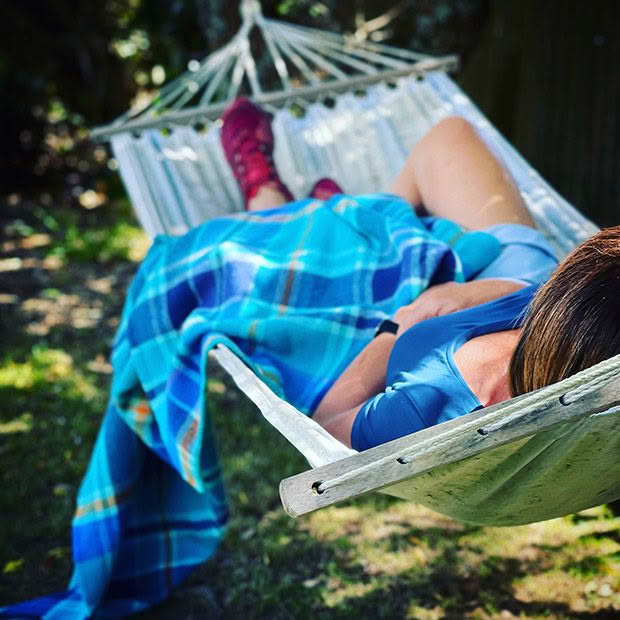
Her customers are diverse, with New Zealand blankets resonating with Kiwis far and wide. Plenty are shipped overseas to people hunting for a comforting piece of home. She hears about people recovering from illness or operations who cuddled up under one of her blankets. Every day Kathleen receives photographs of new grand-babies, caravans and Kombis draped in her wool.
“There were two little boys who got matching turquoise blankets, and the original label says Dreamwarm, so they call them their dream blankets. They’d say, ‘we’re ready to go to bed now mum so we can have our dream blankets’. It made me cry. That one really stayed with me,” she says.
Another mum sent in a photo of her daughter’s flat in Dunedin, who’d styled her first room away from home around the colours in a pink Fresh Retro Love blanket.
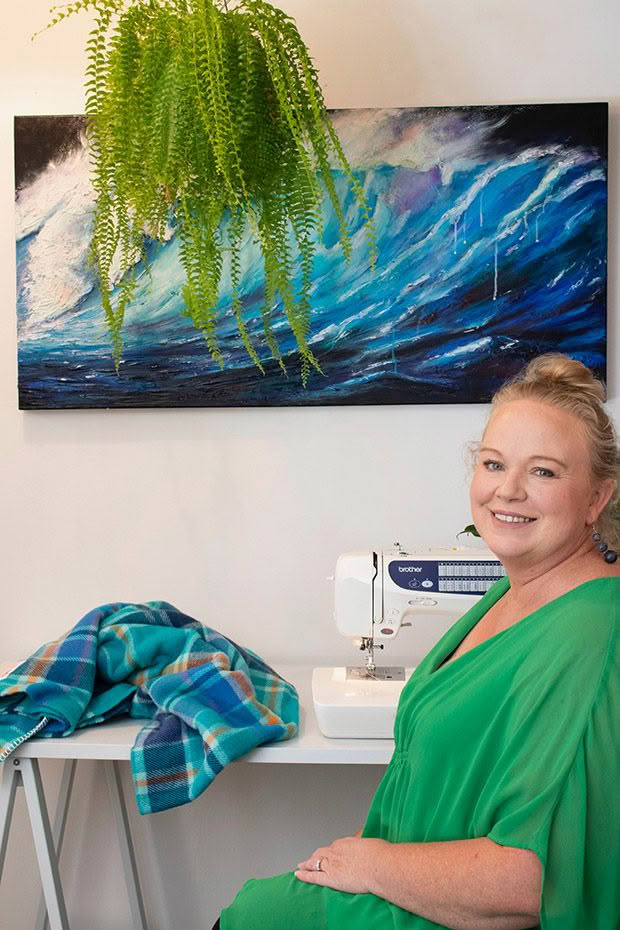
Kathleen’s latest venture: producing new wool blankets at the country’s last wool mill. “In the 70s, there were 18 wool mills, now there’s only one in Auckland. It’s really about keeping things NZ-made. Our industry has changed and a lot goes off shore for processing and will come all the way back to us.”
Kathleen says at night, tucked under a woollen blanket (naturally), she’d think about how she could spread the good news of wool a little faster than one restored blanket at a time. “It’s hard to buy NZ-made blankets, so I thought, ‘Kathleen, this is your mission to make blankets and get wool back on beds again.’”
It’s a form of reinvention, Kathleen’s way of paying homage to the classic Kiwi blanket. “They’re something that worked for a long time, they were never broken. I want to keep them going.”
WHY WOOL?
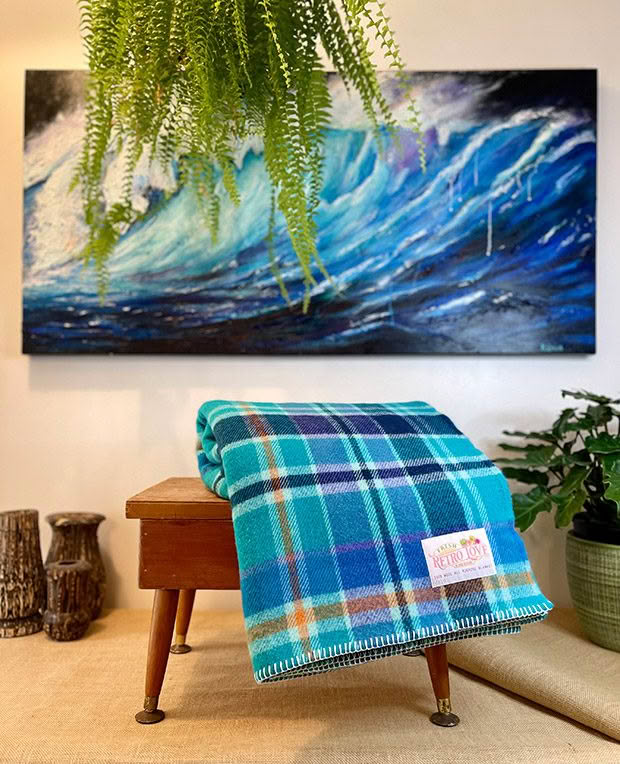
Kathleen’s top four reasons why wool is the way to go:
1. Wool is natural and biodegradable, it’s also renewable.
2. It’s hypoallergenic, breathable and non-toxic, so ideal for kids or people with allergies.
3. Wool is temperature-regulating and flame resistant.
4. It’s resistant to bed bugs and absorbs air contaminants.

